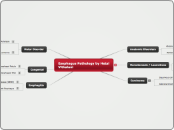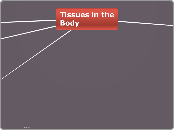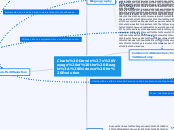Esophagus Pathology by Hetal Vithalani
Begins at cricoid cartilage (vertebral level C6), ends at GE (gastroesophageal) junction.
The esophagus descends on the anterior surface of the thoracic vertebrae to the right of the thoracic aorta.
The esophagus passes posterior to the left atrium.
Clinical Correlate: Enlargement of the left atrium (as a result of mitral stenosis, for example) → impingement on the esophagus and symptoms of dysphagia. It can also be visualized by barium swallow or EGD.
The esophagus exits the thoracic cavity and enters the abdominal cavity via the esophageal hiatus of the diaphragm, located at T10.
The esophagus is surrounded by muscle that is responsible for peristalsis.
less
- Skeletal muscle in upper 5% of esophagus
- Skeletal and smooth in the middle 45%
- Smooth in the distal 50%
Esophagitis
Barrett Esophagus
Barrett Esophagus
Metaplasia of the lower esophageal mucosa from stratified Squamous epithelium to nonciliated columnar epithelium with goblet cells.
1. response of lower esophageal stem cells to acidic stress
May progress to dysplasia and adenocarcinoma
Gastroesophageal Reflux Disease (GERD)
GERD
Reflux of acid from the stomach due to reduce LES tone
Risk factors includes
Alcohol
Tobacco
Obesity
Fat rich diet
caffeine
hital hernia
Clinical features
Heartburn ( mimics cardia chest pain)
Asthma (adult onset) and cough
Damage to enamel of teeth
Ulceration with stricture and Barrett esophagus are late complication
Congental
Esophageal Web
Esophageal Web
Thin protrusion of esophageal mocosa, most often in the upper esophagus.
Present with dysphagia for poorly chewed food
increased risk for esophageal squamous cell carcinoma
plummer - winson sysndromes characterized by severe iron deficiency anemia, esophageal web, and beefy red toungue due to atrophic glossitis.
Middle age women
Schatzki ring are web like narrowings at the gastroesophageal junction.
Tracheoesophagel Fistula
Tracheoesophageal Fistula
abnormal connection (fistula) between trachea and esophagus, commonly congenital
Clinical presentation
Maternal polyhydramnios → excess amniotic can be detected prenatally → amniotic fluid is not recycled as efficiently but is still produced by fetal kidney.
Connection between stomach and trachea: stomach/abdominal distention in newborn (CXR→air bubble in stomach) & ↑ risk of chemical pneumonia (pneumonitis)
Blind ending esophagus: Difficulty feeding (choking and vomiting), can’t pass feeding tube into newborns stomach
Motor Disorder
Hiatus Hernia
A hiatus hernia or hiatal hernia is the protrusion (or herniation) of the upper part of the stomach into the thorax through a tear or weakness in the diaphragm.
Risk factors
Increased pressure within the abdomen caused by:
Heavy lifting or bending over
Frequent or hard coughing
Hard sneezing
Pregnancy and delivery
Violent vomiting
Straining with constipation
Obesity (extra weight pushes down on the abdomen increasing the pressure)
Use of the sitting position for defecation
Heredity
Smoking[citation needed]
Drug use, such as cocaine
Stress * Diaphragm weakness
Roling hiatus hernia
Rolling (or paraesophageal) hiatus hernia, when a part of the stomach herniates through the esophageal hiatus and lies beside the esophagus, without movement of the gastroesophageal junction. It accounts for the remaining 5% of hiatus hernias.
sliding hiatus hernia
The most common (95%) is the sliding hiatus hernia, where the gastroesophageal junction moves above the diaphragm together with some of the stomach.
Achalasia
A-chalasia [a=not, chalao (greek)= to loosen/relax]: failure of LES relaxation + loss of distal esophageal peristalsis.
Failure of complete LES relaxation: damage to inhibitory (NO synthase producing) neurons that enable relaxation
Degeneration of neurons in esophageal wall
(Auerbach’s / myenteric plexus) → loss of smooth muscle contraction/motility → uncoordinated, or lack of, peristalsis
Note: Inflammation of esophageal myenteric plexus is pathognomonic
↑ risk of esophageal squamous cell carcinoma
most common neuromuscular disorder of the esophagus
Sx: progressive dysphagia to solids and liquids, nocturnal regurgitation of undigested food
Worsening dysphagia (difficulty swallowing) to solid AND liquids indicates motility disorders→ achalasia, myasthenia gravis, stroke, CREST syndrome
Note: Dysphagia limited to solids indicates an obstructive lesion (i.e esophageal web/cancer)
Bird’s beak: proximal esophagus is chronically dilated; LES stays closed during swallowing (acute esophageal tapering at the lower esophageal sphincter and narrowing at the gastro-esophageal junction forms the “beak” of the bird)
Primary achalasia: etiology unknown.
Secondary causes of achalasia: Chagas disease, diabetic neuropathy, esophageal CA, infiltrative disorders such as malignancy, amyloidosis, sarcoidosis
Carcinoma
Benign Esophageal Tumors: leiomyoma is the most common
Adenocarcinoma
Adenocarcinoma
adenoCA in lower 1/3
more common than SCC in the United States and affects Caucasians more than African American.
Adenocarcinoma arises in the distal esophagus.
associated wtih Barrett Esophagus and dysplasia
prognosis is poor.
Squamous cell carcinoma
Squamous cell carcinoma
in upper 2/3 of esophagus
SCC
of the esophagus is the most common type of esophageal cancer in the world, but not in the United states.
SCC affects males more then females, and African American more than caucasins the typical age is usally older than 50 years.
Risk Factors
Heavy somoking
Alcohol
Achalasia
Plummer vinston syndrome
tylosis
prior lye ingestion.
Presentation
SCC of the esophagus is often asymptomatic until late in the course. When symptoms do develpo, they may include progressive dysphagia; weight loss and anerexia; bleeding or hoarseness or cough
DS:
Endoscopy with biopsy
Treatment
surgery with the prognosis being poor
Hematemesis / Lacerations
Esophageal varices
Mallory -Weiss syndrome
Mallory -Weiss Syndrome
Longitudinal laceration of mucosa at the gastroesophageal (GE) junction
caoused by
severe vomiting
(usually due to alcoholism or bulmia)
present with painfull hematemesia
risk of boerhaave syndrome - repture of esophagus leading to air in the mediastinum and sbeutaneous emphysema.
Anatomic Disorders
Zenker Diverticulum
Zenker Diverticulum
outopuching of phyryngeal mucosa throgh an acquired defect in the muscular wall (false diverticulum)
Arises above the upper esophageal sphincter at the junction of the esophagus and pharynx
presents with dyphagia, obstruction, an halitosis ( bad breath)
Atresia









